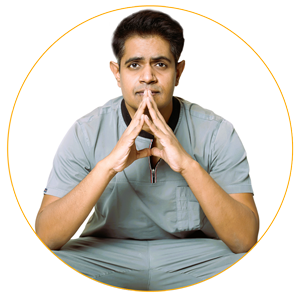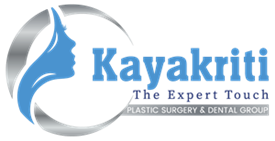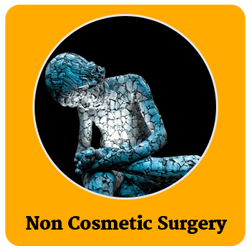Care of Burn Patients
Care of
Burn Patients
Flame or fire which is the most common type of burn injury seen in our population

Burn injury can be due to
- Flame or fire which is the most common type of burn injury seen in our population
- Scald burn- burn injury due to falling of hot liquids or water. Scald burns are very commonly seen in children
- Electric burn due to electric shock
- Chemical burn due to various chemicals falling on the body
Of all these agents which cause burn, fire or flame burns are the most common. It is so common in our population that flame burn has become synonymous with burn unless specific other causes are mentioned.
Degree of burns
- First Degree
- A first-degree burn is like a sun burn.
- The area is red, pink and painful.
- No blisters
Applying skin moisturizers helps the healing process and controls the pain. Some peeling occurs, but there is no scarring. Most first-degree burns heal after a few days
- Second-degree burns
- The area is red and painful
- Blisters are present
- Swelling is present
Second degree burn destroys the top layers of skin, which causes blistering. It is best to keep them covered using a clean, non-stick bandage and seek medical attention. These burn usually heal with regular dressings and if it does not heal within 21 days, would require skin grafting.
- Third-degree burns
- The area can be white, black, deep red or charred skin
- May be painful but could be numb
A third-degree burn goes very deep into the skin, causing it to feel dry and hard. These burn cannot heal well without a surgery and skin grafting.
With any type of burn, make sure you keep yourself hydrated
First Aid at home in thermal burns
- Put out fire first
- Remove all burned clothes from the body of the victim. Hot clothing may cause a deeper injury. If clothing sticks to the skin, cut or tear around it
- If clothing catches fire, STOP, DROP and ROLL
- STOP because running will fan the flames.
- DROP to the ground and cover your eyes and nose with your hands.
- ROLL side to side to stamp out the flames.
- Call for help
- Check to see if the person is breathing. If not, start rescue breathing (mouth-to-mouth resuscitation) if you know how.
- Don't put a large, serious burn in water, that can cause a sudden drop in body temperature and lead to hypothermia.
- Keep the burned area raised above heart level if you can.
- Keep a close watch for signs of shock, like fainting or dizziness, pale skin, and shallow breathing. If you notice any of these, try raising their feet and legs a bit but don't move them. If they start to throw up, turn them on their side.
- Pour cool water over burned areas - Do this for 3 to 5 minutes (30 to 40 minutes for a chemical burn).
- Do not put ice over the burned areas - This may cause more damage and hypothermia.
- Remove all jewellery, belts and tight clothing - Burned areas will swell immediately. If the victim's neck is burned, make sure nothing is around it.
- Do not apply self-professed medicines, kitchen items ortoothpaste.
- Cover the area with a clean, dry sheet.
- Keep the patient warm.
- Take the patient to the hospital immediately.
Prevent from scald burn -hot water, tea, coffee
- Guard your children and Educate them about the dangers of burns
- Test hot water in sinks, showers and bathtubs with your elbow.
- Never leave children alone in the tub, shower or sink–they may turn the hot water on.
- Don't bathe a child under running water–the temperature can change very quickly.
- Keep the handles on cooking utensils turned in.
- Keep cups and bowls with hot contents out of reach.
- Don't hold or pass hot liquids over children.
Prevent from burn from Hot surfaces-silencer, handles, seats
It's common for adults and children to burn themselves by touching a hot surface.
- Always supervise children.
- Never place cribs and beds near radiators.
- Always keep the oven door closed.
- Never place a plugged in iron on a bed or the floor or leave it unattended.
- Never leave a curling iron un attended or out for a child to plug in.
- Keep children away from the stoves or hot plates.
- Be careful of the silencer on the two wheelers
- Indian hot summers produce a lot of hot surfaces like cement, car door handles, and much more.
- Make sure you wear protective layers and are aware of possible hot surfaces.
Management of Burns
Patients with burn are managed depending on severity of the burn. Each kind of burn needs special care and attention to decide the treatment. Apart from type of burn, we always look for the depth of burn and the percentage of surface area of body covered by the burn injury.
- Minor burns can be treated at home and usually heal within 2 to 3 weeks with regular dressings.
- If there is more than 10% of body surface area involved, admission in a dedicated ward for burn patients is advised. They may need specialized dressings and skin grafts for treatment.
- More than 50% burn is usually very difficult to manage and chances of survival are not very good.
First is to re-hydrate the patient with lots of IV fluids and to avoid further fluid loss by dressings. Pain medications are to be given along with antibiotics and anxiety medications.
Once initial treatment is done, regular dressings are done every alternate day
The time taken in healing and the need for surgical or medical treatment is different in different degrees of burn.
First-degree burns require only application of topical soothing agents and pain killers, if needed.
Second-degree burns need dressings with topical antibiotic creams and ointments. They usually heal by dressings only within 2 to 3 weeks without leaving much scar. Specialized dressings for burn wounds are available which are impregnated with nano crystalline silver, collagen protein or antibiotics which help in preventing wound infection and hasten the healing process. Advanced dressings are now used to initiate early healing process. Deeper second-degree burns form a raw area after regular dressings in few cases which would require skin grafting.
Third-degree and fourth degree burns require surgical procedures for cleaning of wound, removal of dead skin followed by coverage with skin graft or flap. In a patient with thermal burn or flame burn, depending on the time of contact with fire- few areas are superficial, few are deep and of third degree. This distinction between superficial and deep burn is never visible immediately and is usually seen after 3-4 days of burn. The superficial areas heal with regular dressings and deeper areas require regular dressings for longer duration and may be skin grafting or flap at joints in future.
In cases of thermal burn of third degree or deep second-degree burn, where it is known and anticipated that the areas would definitely require grafting in future, early primary excision of the area and coverage of the area with skin graft can prevent a lot of complications like septicaemia, infection and help in faster recovery of the patient and earlier discharge from the hospital.
If the burn area which does not heal on its own or within a month should ideally be grafted with skin. These raw areas if not grafted lead to-
- Unstable area formation (recurrent breakdown, itchy skin)
- Recurrent ulcers even after healing
- Development of white patches over the area
- Quality of skin is not good.
- Development of contractures if across joints
- Tendency for hypertrophic scars and keloid over such raw areas
Skin grafting is the transfer of thin skin sheet, usually taken from thigh, to cover the raw areas of the burn. Once the wound is healthy, skin grafting may be done if defect is not much deep and vitals structures are embedded in granulation tissue. In such cases, dressing is done every alternate day after surgery. Patient may be discharged after 5-6 days, and regular follow-up is required. The area gradually heals and need compression garment later to avoid hypertrophy of scars and to reduce the swelling.
Thermal burns usually require skin graft only for healing and would require flaps in exceptional cases. Cases of electric burn require flaps as the area of burn is quite deep.
Once patient has healed completely, physical and occupational therapy is required to rehabilitate the patient. This will include various exercises, pressure garments and surgical procedures, if any, to correct the deformities caused due to burn.
Know your surgeon better

Best plastic surgeon, Dr. Amit Agarwal is an American Board Certified, extensively trained, and best Plastic & Aesthetic surgeon in Lucknow. He is the Chief Plastic Surgeon heading the Department of Plastic, Microvascular, and Craniofacial surgery at Vivekananda Polyclinic and Institute of Medical Sciences, Lucknow, U.P, India. He maintains a busy practice at Avadh and Nishat Hospital and his own center - Kayakriti Plastic Surgery & Dental Center. He was formerly a Consultant in the Department of Plastic Surgery and Burns at the prestigious SGPGI, Lucknow.
MS, DNB (General Surgery) MCh, DNB (Plastic Surgery),
MNAMS, FACS, FICS, FRCS (Edinburgh, UK)
His Credentials
Three pillars of kayakriti
Privacy
We believe your experience with us should be comfortable and hassle-free to make it one of your best lifetime experiences for yours. We, here at the clinic, take full precautions to maintain your privacy in any manner. We also provide a staff who will receive you from the gate and take you to the chamber directly if you demand.
Trust
Our Surgeon is highly qualified and internationally certified with a team of skilled staff to perform any surgical or non-surgical treatment on your body.
Safety
When you plan to undergo any surgery you should always keep in mind that it's your body and it's a surgery. We, here always keep your safety a priority and will never recommend you to undergo any such procedure which is not safe for you. We also provide you with a detailed description of the complications which may occur after the surgery during the consultation as it's a surgical procedure so there may be some complications depending on the way your body reacts.
Kayakriti in news



Frequently Asked Questions
If you have flat or small breast and you want to improve your breast and hip contour ratio then you are a good candidate for it. The answer will be best provided after the first consultation with Dr Amit Agarwal.
Acute pain will be there for almost a week which gradually reduces and there will be soreness and swelling which may take up to 3 weeks to subside.
You can join your work and daily routines after a week of the procedure and can start exercising after 3 weeks of it.
Yes, you have to wear it round the clock unless we suggest you to remove it.
This surgery does not affect the ducts or the areas of the breast involved in milk production. Thus, it does not affect the breast feeding.
This surgery does not affect the ducts or the areas of the breast involved in milk production. Thus, it does not affect the breast feeding.












Kayakriti Plastic Surgery & Dental Center
D-43, Near Punjab National Bank, Rajajipuram, Lucknow, Uttar Pradesh - 226017, India
Phone No. +919695940009, +919695940006
Map Location





























Social Media Presence